Nippon Kogaku - Nikko
NK 10x50 ZielvisierDas Konservendosen große und schwere Visier mit Fadenkreuz ist beim Exemplar mit Nr.13 nur mit "NK" für Nippon Kogaku über der Nummer beschriftet, andere spätere bekannte Exemplare, wie Nr. 38 sowie Nr. 98 sind vor der Nummer mit NK graviert und haben außerdem darüber das Kanji-Zeichen 光 (ko) in einem Dreieck mit abgeschrägten Ecken (--> sechseckig). Dies ist ein Wortteil des frühen Firmennamens Nippon Kogaku Kogyo Kabushikigaisha ("Japan Optical Industries Corporation") bzw. Nikko - "kogaku" heißt "optisch" und die spätere verkürzte Wortzusammensetzung "Nikko" bedeutet auch Sonnenlicht. |
Nikko 10x50 Aiming SightThis tin can like, large and heavy sight with a cross-hairs reticle specimen with No 13 is only marked with "NK" (Nippon Kogaku) above the number, wheras other later known specimen such as No. 38 and No. 98 bear the "NK" mark before the number and above this have the Kanji sign 光 (ko) within a triangle with cut angles (--> hexagonal). This is a opart of the word of the early company name Nippon Kogaku Kogyo Kabushikigaisha ("Japan Optical Industries Corporation") or Nikko - "kogaku" stands for "optical", and the later abbreviated word composition "Nikko" also means "sunlight". |
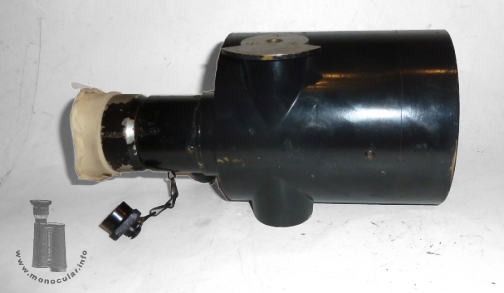
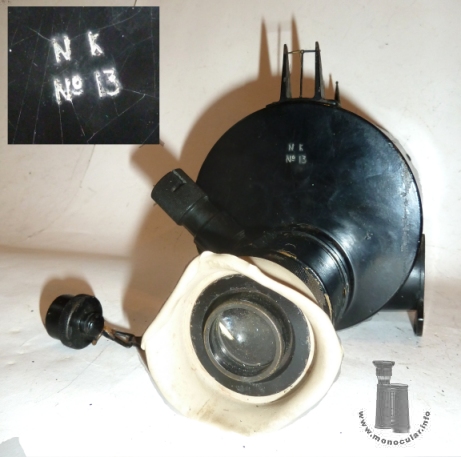
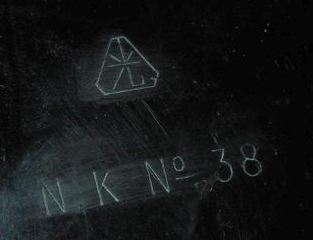
| Das Messing-Monokular ist schwarz lackiert und hat eine beige Gummiaugenmuschel. Das Okularstück mit der Augenmuschel kann etwas hin- und hergeschoben werden, um ggf. mit Brille/Gasmaske im richtigen Augen-Okular-Abstand genutzt zu werden. Im Okularsystem ist ein Fadenkreuz eingebaut, das beleuchtet werden kann. Dafür gibt es links schräg oben eine abschraubbare Metallkappe, die mit einer Kette vor Verlust gesichert ist; ist diese abgeschraubt, kann die längere Beleuchtungseinheit eingeschraubt bzw. eingesetzt werden. Als Grobvisier hat das 10x50 eine Kimme und Korn-Einrichtung oben am Gehäuse. Das Monokular konnte mit seinen Befestigungsstutzen links und rechts montiert werden, so dass es damit kippbar war. In der vorhandenen Transportkiste gibt es auch zwei Okularfilter in Grün und Blau sowie einen Objektivblenddeckel, um bei verschiedenen Lichtbedingungen eine Blendung zu nehmen oder den Kontrast zu erhöhen. | The brass monocular is lacquered black and has a beige rubber eyecup. The ocular part with the eyecup can be moved a little bit in order to get the rigth eye-relief when using spectacles or a gas-mask. There is a cross-haris in the eyepeice which can be illuminated. Hence to the top left of the ocular there is a threaded metal cap secured with a small chain; when unscrewed, the lighting unit can be screwed and slipped in the place. As an coarse sight the 10x50 comes with a notch and bead sight on top of the housing. The monocular was mounted with its short trunnions which allowed the sight to be tilted. The surviving wooden carrying case holds two ocular filters, a green and a blue one, and an objective cap with an aperture. Both serve to protect against bright light or to enhance the contrast. |
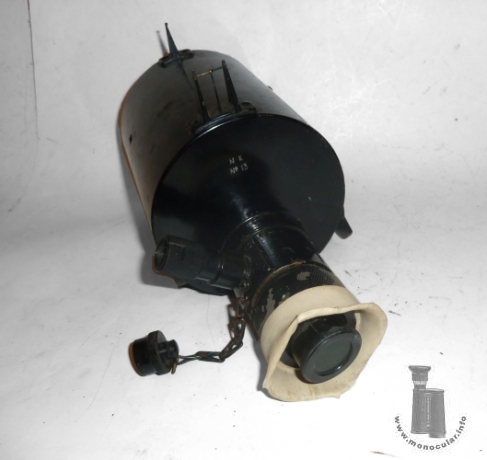
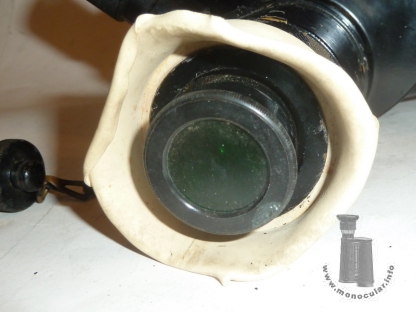
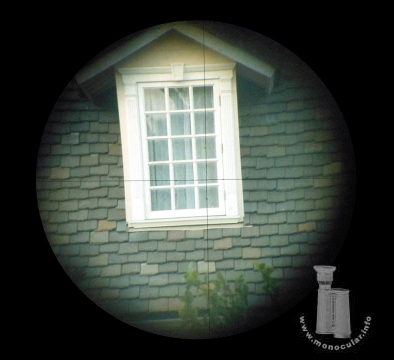
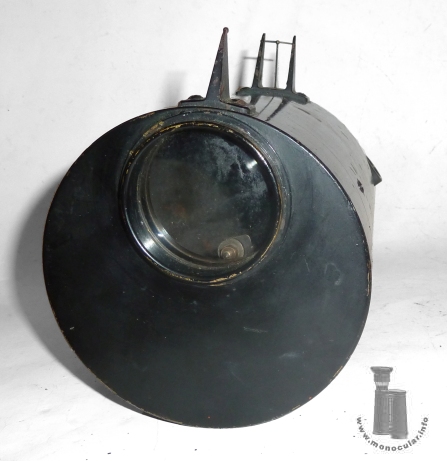
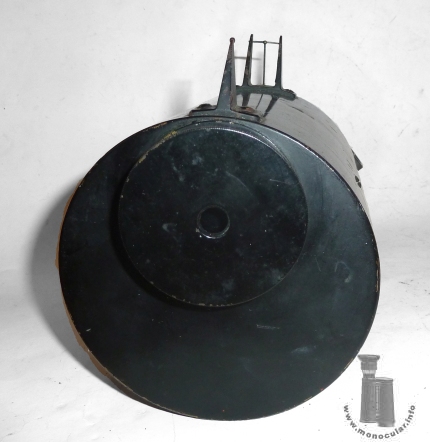
| Die Konstruktion, Baugröße und das Gewicht von 4,160 kg lassen vermuten, dass das Zielvisier entweder für ein Geschütz, Flak oder im Cockpit von Kampfpiloten genutzt wurde. Das 10x50 ist 24-25cm lang, die kurze Objektivfasssung ist 57mm, das runde Gehäuse 120mm, das Okularstück zunächst 56mm, dann 52mm, der geriffelte Okularteil 57mm und die Gummiagenmuschel am breitesten Ende 64mm im Durchmesser. Die Befestigungsstutzen sind 42mm im Durchmesser. Die Kimme und das Korn sind 33mm hoch. |
Its cosntruction, its size and its weight of 4.160 kg hints to a use with some cannon, an AA gun or as a aiming sight in a cockpit of a fighter plane. The 10x50 is 24-25cm long, the shoprt objective frame is 57mm, the cylindrical housing 120mm in diameter. The eyepiece starts with 56mm, then measures 52mm, the knurled ocular part is 57mm, and finally the rubber eyecup is 64mm at its end in diameter. The trunnions are 42mm in diameter. The notch and bead sight is 33mm tall. |
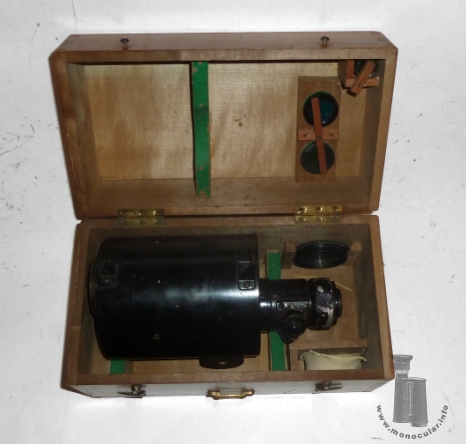
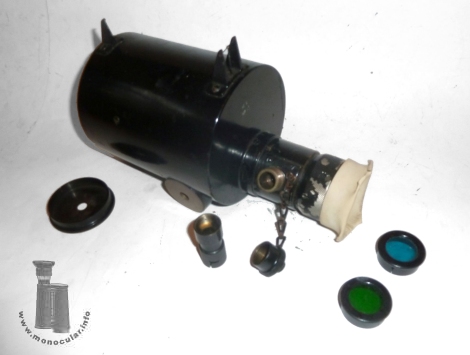
Fotos: Zeun

